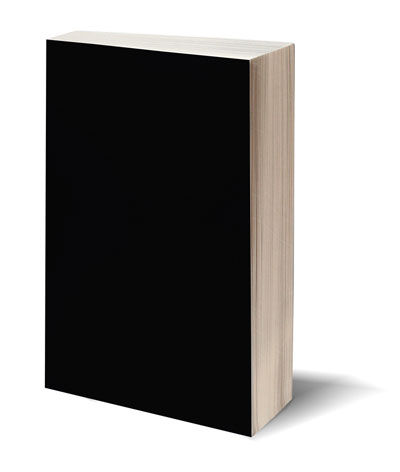LIABILITY INSURER’S DUTY DEFEND SACROSANCT IN INSURANCE CONTRACT SUBJECT TO RARE EXCEPTION, HOLDS TEXAS SUPREME COURT
Loya Ins. Co. v. Hurtado
Michael Sean Quinn, Ph.D., J.D., C.P.C.U. Etc.*
The duty of a liability insurer to defend its insured is a central part of the liability insurance contract. It may be found there either by the explicit language of the policy or as an implied term. Exposure to paying legal fees in defending against a lawsuit is one of the losses liability insurance is there to cover. This is a crucial part of liability insurance policies. That exposure can often be larger than the amount recoverable; they would be incurred far more frequently than judgments holding liability, and they would provide huge areas for blackmail.
To have an insured almost automatically protected, whether an insurer has a duty to defend is decided by simple, mechanical means that favor the insured. The principle is this: if the plaintiff’s pleading against the insured defendant asserts, describes, or sketches (even poorly) an act, omission, event, or state of affairs and an alleged resulting injury, then the insurer has a duty to defend the insured, judging all this by (1) what is to be found within the petition or complaint itself, i.e., within its four corners of the pages of the pleading and not by facts found outside it, and (2) by what is to be found in the insurance policy, that is, within its four corners. This is called the “Eight Corners Rule.” Obviously, this phrase is a metaphor since petitions and insurance policy invariably have multiple pages.
Virtually all policies of liability insurance involve a provision that the insurer has a legal obligation to defend an insured if the insured is sued for recovery by means of a pleading, usually a Petition or Complaint which describes or asserts, even cursorily, confusedly, or falsely, a covered type of event or state of affairs. The pleadings themselves may involve some types of fraud, e.g., if the plaintiff is trying to defraud the defendant, i.e., the insured, and thereby the insurer. The duty to defend is a very broad one–much broader than the duty to pay the insured’s insured losses.
This duty on the part of an insurer is a central part of the contract. It may be found there either by the explicit language of the policy or as an implied term. Exposure to paying legal fees in defending against a lawsuit is one of the losses liability insurance is there to cover. This is a crucial part of liability insurance policies. That exposure can often be larger than the amount recoverable; they would be incurred far more frequently than judgments holding liability, and they would provide huge areas for blackmail.
To have an insured almost automatically protected, whether an insurer has a duty to defend is decided by simple, mechanical means that favor the insured. The principle is this: if the plaintiff’s pleading against the insured defendant asserts, describes, or sketches (even poorly) an act, omission, event, or state of affairs and an alleged resulting injury, then the insurer has a duty to defend the insured, judging all this by (1) what is to be found within the petition or complaint itself, i.e., within its four corners of the pages of the pleading and not by facts found outside it, and (2) by what is to be found in the insurance policy, that is, within its four corners. This is called the “Eight Corners Rule.” Obviously, this phrase is a metaphor since petitions and insurance policy invariably have multiple pages.
The language of the pleading is construed in ways favorable to the insured. Vague pleadings favor the insured’s right to a defense, as does the language of the policy.
Now you know, if you didn’t already, why this is called the “Eight Corners Rule,” four come from the pleading, and four come from the policy. The actual length of the pleading and the policy are irrelevant.
All U.S. states and the entirety of federal courts have this rule or something so close to it that only learned insiders could recognize any differences. Not all states have the same rule as to how much of the case the insurer must defend. In Texas, the rule is that if a lawsuit brought against an insured contains one claim which requires a defense, then the insurer must defend the entire case as part of its contractual obligation, and it has to pay for the whole defense. California has a different rule.
On May 1, 2020, the Texas Supreme Court ruled unanimously that there was an exception. This exception arises when the plaintiff in the case under consideration as to coverage and the insured who (or which) is a defendant in that case together decide to cooperate in deceiving the insurer as to facts crucial to coverage. The court called this “conclusive fraud,” and no description of any kind or quality as to the conspiratorial arrangement was to be found anywhere within the relevant eight corners.
Tests of and challenges to the Eight Corners Rule occur in courts from time to time. That is what is at issue in this case.
The number of this case in the Supreme Court of Texas records is 18-0837, and the full list of parties to the case (aka the “style” of the case—or part of it anyway) is Loya Insurance Company, Petitioner v. Osbaldo Hurtado Avalos and Antonio Hurtado as Assignees of Karla Guevara, Respondents. The case is coming to the Supreme Court from the San Antonio Court of Appeals, aka the Court of Appeals for the Fourth District of Texas. 592 S.W.3d 138. The whole list of parties is too long for most people, so it will be shortened for most citations and other purposes. It will probably be referenced as Loya Ins. Co. v. Avaldos, although there will be a temptation for some to cite the case as Loya Ins. Co. v. Hurtado. The former of these two is the correct one and is the one to be used.
Here is the background. The insurance company, Loya had sold an auto liability insurance policy to Karla Guevara. Karla’s husband, Rodolfo Flores was explicitly excluded from the policy’s coverage.
There was a car accident. Rudolfo Flores, the husband of Karla Guevara, driving (or “moving”) Karla’s car, ran into a different car occupied by Osboldo Avalos and Antonio Hurtado, then apparently a couple. The two couples agreed to falsely state to the responding police officer and to the insurer that Karla Guevara was driving.
The Hurtado couple (Osbaldo and Antonio) sued Karla and sought coverage from Loya. It provided her a defense. Karla disclosed the lie to the lawyer appointed to defend her attorney and identified Rodolfo as the actual driver. Defense counsel disclosed the lie to the insurer. It canceled Karla’s deposition and denied her both coverage and a defense. The Hurtados moved for summary judgment; they prevailed and were granted judgment against Karla for $450.343.34. (Suit #1)
Karla assigned her rights against Loya to the Hurtado couple. They filed suit against it for recovery for breach of contract, negligence, insurance bad faith, and violation of the Deceptive Trade Practices-Consumer Protection Act (DTPA). The insurer brought counterclaims for breach of contract, fraud, and a declaratory judgment that it provided no coverage for what happened and no duty to defend. (Suit #2).
In Suit #2, the trial court granted summary judgment to Loya on the grounds that the Hurtadoses were “asking this Court to ignore every rule of justice and help [them] perpetuate a fraud.” The Hurtadoses appealed arguing that the district court had acted contrary to the Eight Corners Rule. The Court of Appeals reversed the decision of the trial court, granting that its opinion appeared seemingly “logically contrary,” but upholding the ironclad, expansively understood duty to defend. One of the justices concurred asking the Supreme Court to review that case and create a narrow exception to take this kind of case out from under the Eight Corners Rule.
The case went up to the Supreme Court. It wrote a masterful opinion including a discussion of the history of the duty to defend, why it had not created this exception before, how declaratory judgments worked, and why Loya did not have to have such judgment before it cut off providing a defense. All of these passages are well worth reading.
The Court’s decision is crystal clear. It upheld or reinstated the trial court and reversed the judgment of the court of appeals. “In determining an insurer’s duty to defend, a court may consider extrinsic evidence regarding whether the insured and a third party [to the contract of insurance] suing the insured colluded to make false representations of fact in that suit for the purpose of securing a defense and coverage where they would not otherwise exist.”
Some people will worry that this new rule will make it possible for unscrupulous insurers to invoke this exception and seek to avoid paying claims or to prolong the litigation process. The Court dealt with this problem. “If the insurer conclusively proves such conclusive fraud, it owes no duty to defend. An insurer confronted with undisputed evidence of collusive fraud may choose to withdraw its defense without first seeking a declaratory judgment, though it risks substantial liability if its view of the duty to defend proves to be wrong.” Obviously, the Court has created a huge burden of proof for the insurer, and an even more rigorous burden if the insurer lacks an undisputed proof of collusive fraud.
It should be kept in mind that this sort of situation is rare, so the situation is unlikely to occur, even in auto cases where it is most likely to come up. Keep in mind, “most likely” is still restricted to rarity.
*See Quinn’s Resumes–“Long Resume” and “Short Resume are on the Internet
This essay is my work and no one else’s and so I alone bear responsibility for it
quinn@QClaw.com
quinn@QClaw.com





Recent Comments